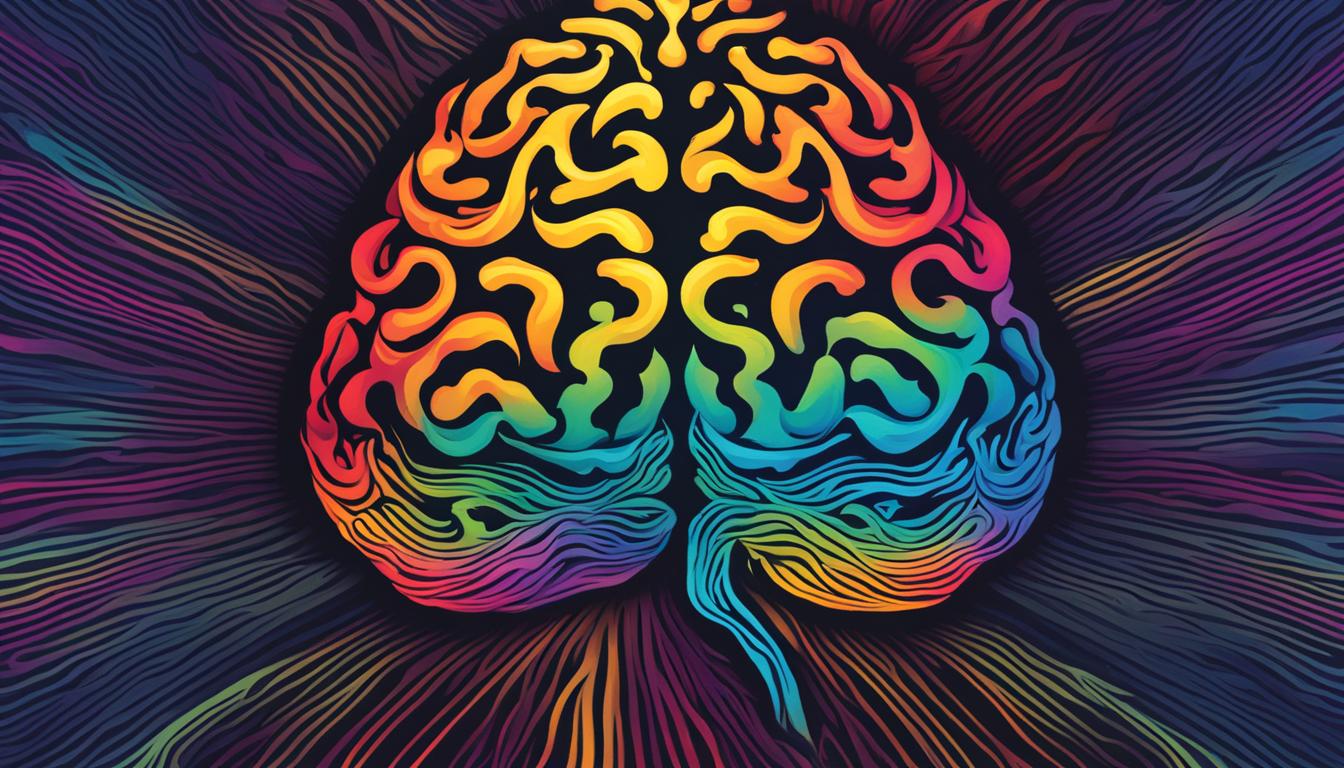Welcome to an exploration of mindfulness, a practice that can transform your life and bring you greater peace and clarity. Mindfulness is the ability to be fully present, aware of your thoughts, emotions, and surroundings. By cultivating mindfulness, you can develop a deeper understanding of yourself and the world around you. In this article, we will dive into the basics of mindfulness, including mindfulness techniques, exercises, and the benefits it can bring to your life.
Key Takeaways:
- Mindfulness is the practice of being fully present and aware of the present moment.
- It involves observing your thoughts, emotions, and surroundings without judgment.
- Mindfulness can be cultivated through daily practice.
- Benefits of mindfulness include stress reduction, improved focus, and increased self-awareness.
- There are various mindfulness techniques and exercises that you can try to incorporate mindfulness into your daily life.
What is Mindfulness?
Mindfulness is the act of bringing awareness to our present moment experience through our senses, thoughts, and emotions. It is a practice that can be done in various forms, such as seated or walking meditation, body scans, or mindful moment practices. The aim of mindfulness is to observe and accept our experience without judgment or reaction.
When we practice mindfulness, we become fully present in the here and now, paying attention to the sensations in our body, the thoughts in our mind, and the emotions that arise. It is about being aware of what is happening in the present moment, without getting caught up in the stories and judgments that our mind often creates.
Mindfulness allows us to develop a sense of clarity and perspective, enabling us to respond to situations with more intention and less reactivity. By cultivating this skill, we can learn to navigate life’s challenges with greater ease and acceptance, cultivating a greater sense of peace and well-being.
The Key Elements of Mindfulness
- Awareness: Mindfulness involves paying attention to our thoughts, feelings, bodily sensations, and the environment around us.
- Non-judgment: It is important to observe our experience without labeling it as good or bad. Instead, we aim to accept things as they are in the present moment.
- Present moment: Mindfulness involves focusing our attention on the present moment rather than dwelling on the past or worrying about the future.
“Mindfulness is the awareness that emerges through paying attention on purpose, in the present moment, and non-judgmentally to the unfolding of experience moment by moment.” – Jon Kabat-Zinn
Practicing mindfulness regularly can help us become more attuned to our thoughts, feelings, and actions, allowing us to make conscious choices that align with our values and well-being. It is a skill that can be cultivated with practice and has the potential to transform our relationship with ourselves and the world around us.

The Benefits of Mindfulness
Mindfulness has numerous benefits that can positively impact our overall well-being. By practicing mindfulness, we can enhance our ability to manage stress, reduce anxiety, and improve our focus and concentration. Here are some key benefits of incorporating mindfulness into our daily lives:
- Stress Reduction: Mindfulness has been shown to reduce stress levels by promoting relaxation and helping individuals develop a greater sense of calm. By cultivating awareness of our thoughts and emotions, we can respond to stressful situations with more clarity and resilience.
- Anxiety Management: Mindfulness techniques can be effective in managing anxiety and reducing its impact on our daily lives. By practicing mindfulness, we can observe anxious thoughts and feelings without judgment or attachment, allowing them to pass by without overwhelming us.
- Improved Focus and Concentration: Mindfulness can help sharpen our focus and increase our ability to concentrate. By training our attention to stay in the present moment, we can minimize distractions and enhance our productivity and performance in various tasks.

Mindfulness also fosters self-awareness, compassion, and emotional well-being. By cultivating mindfulness, we can develop a deeper understanding of ourselves, leading to improved decision-making and healthier relationships with others.
Mindfulness techniques for anxiety
When it comes to managing anxiety, specific mindfulness techniques can be particularly helpful. These techniques include:
- Deep Breathing: Taking slow, deep breaths can activate the body’s relaxation response and help alleviate anxiety. Focus on your breath and allow it to anchor you in the present moment.
- Body Scan: A body scan practice involves bringing attention to each part of the body, noticing any sensations and tension. This technique helps cultivate bodily awareness and promotes relaxation.
- Loving-Kindness Meditation: This practice involves directing kind and compassionate thoughts towards oneself and others. It can foster feelings of warmth, connection, and reduce self-criticism and judgment.
By incorporating mindfulness into our daily lives and regularly practicing these techniques, we can experience the powerful benefits of mindfulness and significantly improve our well-being.
How to Practice Mindfulness
Practicing mindfulness is a simple yet powerful way to enhance your overall well-being and bring more calm and presence into your life. Whether you’re a beginner or have some experience with mindfulness, incorporating it into your daily routine can have profound effects on your mental and emotional state. Here are some tips on how to practice mindfulness:
1. Set aside dedicated time for formal meditation
Formal meditation is a structured practice that involves setting aside a specific time and space to focus on your breath, body sensations, or other mindfulness techniques. Find a quiet and comfortable place where you can sit or lie down without distractions. Start with just a few minutes and gradually increase the duration as you become more comfortable with the practice.
2. Incorporate mindfulness into everyday activities
Mindfulness doesn’t have to be limited to formal meditation sessions. You can integrate it into your daily activities, such as eating, walking, or even doing household chores. Pay attention to the sensations, sounds, and smells around you as you engage in these activities. Be fully present in the moment and observe your thoughts and emotions without judgment.
3. Practice mindfulness meditation
Mindfulness meditation is a specific technique that involves focusing your attention on your breath. Find a quiet and comfortable place to sit, close your eyes, and bring your attention to the sensation of your breath as it enters and leaves your body. Whenever your mind starts to wander, gently bring your focus back to your breath. This practice can help you develop a greater sense of presence and awareness.
Remember, mindfulness is a skill that takes time and practice to cultivate. Be patient with yourself and approach it with a sense of curiosity and openness. With consistent practice, you’ll gradually experience the benefits of mindfulness in your daily life.

Exploring Mindfulness Techniques
In the practice of mindfulness, there are various techniques that can be used to cultivate a greater sense of self-awareness and presence. These techniques allow us to explore different aspects of our experience and develop a deeper understanding of ourselves. Let’s explore some of these mindfulness techniques:
Awareness of Breath
One of the foundational techniques in mindfulness is breath awareness. This involves directing our attention to the sensation of the breath as it enters and leaves the body. By focusing on the breath, we can anchor ourselves in the present moment and cultivate a sense of calm and clarity.
Body Scans
A body scan is a technique where we systematically bring our attention to different parts of the body, starting from the top of the head and moving down to the toes. This practice helps us develop a greater awareness of bodily sensations, release tension, and cultivate a deeper connection with our physical selves.
Loving-Kindness Meditation
Loving-kindness meditation is a practice that involves directing well-wishes and compassion towards ourselves and others. It allows us to cultivate a sense of kindness, empathy, and connection. This technique can be especially beneficial for reducing negative emotions and developing a more positive outlook on life.
Bedtime Practices
Practicing mindfulness before bedtime can help promote relaxation and improve the quality of sleep. This can include activities such as journaling, gentle stretching, or simply taking a few moments to reflect on the day with a sense of gratitude.
By exploring these mindfulness techniques and incorporating them into our daily lives, we can deepen our mindfulness practice and experience the numerous benefits it has to offer.
Mindfulness and Meditation
Mindfulness meditation is a powerful practice that allows us to train our minds to be fully present in the moment. By focusing our attention on the breath or other anchor points, we can cultivate a deep sense of awareness and calm. This practice has been shown to have numerous benefits for both our mental and physical well-being.
Through mindfulness meditation, we can reduce stress and anxiety, as well as improve our ability to cope with difficult emotions. By observing our thoughts and emotions without judgment or attachment, we can develop a greater understanding of ourselves and gain insight into our patterns of thinking and behavior. Mindfulness meditation can also help us develop a sense of compassion and kindness towards ourselves and others.
Practicing mindfulness meditation doesn’t require a significant amount of time or special equipment. Even just a few minutes of daily practice can make a difference. Find a quiet and comfortable place to sit, close your eyes, and focus your attention on your breath. When your mind inevitably wanders, gently bring your attention back to the breath, without judgment. Over time, you may notice an increased sense of peace and clarity as you continue to cultivate this practice.

Mindfulness and Stress Reduction
Mindfulness meditation is particularly effective in reducing stress and promoting relaxation. By bringing our attention to the present moment and letting go of worries about the past or future, we can find a calmer state of mind. Research has shown that regular mindfulness practice can lower levels of the stress hormone cortisol and improve our ability to cope with stressful situations.
By incorporating mindfulness into our daily lives, we can experience a greater sense of peace and well-being. Whether it’s taking a few mindful breaths in the midst of a busy day or engaging in a longer meditation session, mindfulness can help us find a sense of balance and reduce the negative impact of stress on our overall health.
Mindfulness Practice for Everyone
Mindfulness meditation is a practice that is accessible to everyone, regardless of age or background. It doesn’t require any special skills or beliefs and can be adapted to suit individual preferences. Whether you are new to meditation or have been practicing for years, mindfulness can be an invaluable tool for cultivating inner peace and well-being.
Take a moment each day to connect with your breath and tune into the present moment. Embrace the practice of mindfulness meditation and discover the profound benefits it can bring to your life.
Cultivating Mindfulness in Daily Life
Mindfulness is not just limited to formal meditation. It can also be practiced throughout the day by bringing awareness to daily activities, such as eating, walking, or interacting with others. By being fully present and engaged in the present moment, we can cultivate mindfulness in all aspects of our lives.
Here are some practical tips to help you incorporate mindfulness into your daily routine:
- Start your day mindfully: Begin your morning with a few moments of stillness and set your intentions for the day ahead. Take a few deep breaths and bring your awareness to the sensations in your body.
- Practice mindful eating: Slow down and savor each bite of your meals. Pay attention to the taste, texture, and aroma of the food. Notice the sensations in your body as you eat.
- Take mindful breaks: Throughout the day, take short breaks to pause, breathe, and check in with yourself. Notice how you’re feeling mentally, emotionally, and physically. Use these moments to ground yourself and reset your focus.
- Engage in mindful movement: Whether it’s going for a walk, practicing yoga, or simply stretching, engage in physical activities with mindfulness. Pay attention to the rhythm of your breath, the sensations in your body, and the movements you’re making.
- Practice mindful listening: When having conversations with others, give them your full attention. Truly listen to what they’re saying without judgment or the urge to interrupt. Notice the nuances in their words and non-verbal cues.
By incorporating these practices into your daily life, you can gradually cultivate a greater sense of mindfulness. Remember that mindfulness is a skill that develops with practice, so be patient and kind to yourself along the way.
Quotes:
“Mindfulness is the key to unlocking the fullness of life.” – Jon Kabat-Zinn
“The present moment is filled with joy and happiness. If you are attentive, you will see it.” – Thich Nhat Hanh

Mindfulness for Emotional Well-being
Mindfulness is not just about being present and aware of our surroundings; it also plays a crucial role in our emotional well-being. By cultivating mindfulness, we can develop a deeper understanding and acceptance of our emotions, leading to reduced stress and anxiety.

When we practice mindfulness, we learn to observe our emotions without judgment. Rather than getting caught up in the storylines or trying to push them away, we create space to simply be with our emotions. This non-reactive stance allows us to develop a kind and compassionate attitude towards ourselves, promoting emotional healing and resilience.
“Mindfulness is the key to unlocking our emotional well-being. It empowers us to acknowledge and accept our emotions, enabling us to respond to them with wisdom and compassion.”
Research has shown that mindfulness techniques, such as meditation and breath awareness, can help regulate emotions and improve emotional well-being. By stepping back and observing our emotions without immediately reacting to them, we can develop a greater sense of emotional control and stability. This can have a profound impact on our lives, both personally and professionally.
So, if you’re looking to enhance your emotional well-being, consider incorporating mindfulness into your daily routine. Take a few minutes each day to practice mindfulness techniques, such as meditation or breath awareness. Allow yourself to be fully present with your emotions, acknowledging them and giving them room to simply be. With time and practice, you’ll discover the transformative power of mindfulness in cultivating emotional balance and well-being.
Mindfulness and the Body
Mindfulness extends beyond the realm of thoughts and emotions and encompasses the physical sensations and experiences of the body. By directing our attention to the present moment and tuning into our bodily sensations, we can develop a deeper understanding and connection with ourselves.
Practicing mindfulness techniques that focus on the body, such as body scans or mindful movement exercises, allows us to become more attuned to the signals our body sends us. We can notice areas of tension or discomfort and take steps to address them, promoting overall well-being.
Mindfulness also offers the opportunity to relax and release tension in the body. By intentionally bringing awareness to our physical sensations, we can consciously let go of any tightness or stress we may be holding onto. This can lead to a greater sense of ease and relaxation, allowing both our body and mind to find balance.
When we cultivate mindfulness in relation to our bodies, we can enhance our self-care and make more informed choices about what our bodies need. This includes nourishing ourselves with healthy foods, getting regular exercise, and prioritizing rest and relaxation. By truly listening to our bodies, we can support our physical well-being and live in harmony with ourselves.

The Benefits of Mindfulness for the Body:
- Relaxation of tense muscles and release of physical stress
- Improved body awareness and connection
- Promotion of physical well-being and self-care
- Reduced physical pain and discomfort
Quotes:
“Mindfulness has allowed me to truly understand the signals my body sends me. I can now respond with kindness and care to its needs, leading to a healthier and more balanced life.” – Sarah, Mindfulness Practitioner
Mindfulness and the Mind
When it comes to mindfulness, one of the key aspects is its impact on our mind. By practicing mindfulness, we develop the ability to observe our thoughts and mental processes without judgment. This allows us to gain insight into our thought patterns and become less reactive to them.
Incorporating mindfulness into our daily lives helps us cultivate a curious and non-judgmental attitude towards our thoughts. This shift in perspective can have numerous benefits, including improved focus, concentration, and overall mental clarity. By observing our thoughts without getting caught up in them, we can create space for greater creativity, problem-solving, and decision-making.
With mindfulness, we become aware of the constant stream of thoughts that pass through our minds. We learn to step back from these thoughts and recognize that they are not necessarily reality, but merely mental constructs. This realization allows us to detach from negative or unhelpful thoughts, reducing their power over us.

The Benefits of Cultivating Mindfulness of the Mind:
- Improved focus and concentration: By training our mind to be fully present, mindfulness helps us stay focused on the task at hand and avoid distractions.
- Enhanced mental clarity: Mindfulness allows us to see our thoughts more objectively, enabling us to make clearer decisions and think more clearly.
- Reduced stress and anxiety: By observing our thoughts without judgment, we can create distance from anxious or negative thinking, leading to greater peace of mind.
- Enhanced problem-solving skills: Mindfulness helps us approach challenges with a calm and focused mindset, enabling us to find creative solutions more easily.
“Mindfulness is not about getting rid of thoughts; it is about changing our relationship with them.”
By cultivating mindfulness of the mind, we can unlock the full potential of our thoughts and tap into our innate wisdom. Through the practice of mindfulness, we can develop a healthier relationship with our thoughts, enhance our mental well-being, and lead a more fulfilled life.
Mindfulness in Daily Life
Mindfulness is not just a practice to be confined to formal meditation sessions. It is a way of being that can be integrated into various aspects of our daily lives. By incorporating mindfulness into our routines, we can experience its benefits and cultivate a greater sense of presence, engagement, and focus in our activities.
Whether it’s taking a moment to fully attend to a conversation, appreciating the taste and texture of the food we eat, or simply pausing to take a few deep breaths before answering the phone, mindfulness can enhance our overall well-being by helping us connect with the present moment.
“Mindfulness is the key to unlock the full potential of each moment, allowing us to fully experience and appreciate the beauty and richness of life.”
To incorporate mindfulness into daily life, we can start by bringing awareness to our senses. Notice the sensations of your body as you walk, the sound of birds chirping, the taste of your morning coffee. By grounding ourselves in the present moment experience, we can fully engage with our surroundings and cultivate a sense of gratitude and wonder.
Additionally, we can use everyday activities as opportunities for mindfulness practice. Whether it’s washing the dishes, brushing our teeth, or even waiting in line, we can bring our full attention to the task at hand, observing our thoughts and sensations without judgment or attachment.
By infusing our daily life with mindfulness, we can tap into its transformative power and create a more meaningful and fulfilling existence.

Conclusion
Mindfulness is a powerful practice that can transform your life. By understanding the basics of mindfulness and incorporating it into your daily routine, you can unlock a multitude of benefits for your well-being.
Practicing mindfulness allows you to be fully present in each moment, bringing your attention to the here and now. This not only reduces stress but also enhances your ability to cope with life’s challenges. By cultivating mindfulness, you can develop a greater sense of calm and clarity, enabling you to navigate stressful situations with ease.
Regular mindfulness practice is key to reaping the rewards. By dedicating time each day to mindfulness meditation or incorporating mindful moments throughout your day, you can establish a solid foundation for mindfulness in your life. The more you practice, the more you’ll notice the positive impact it has on your overall well-being.
So why wait? Start your mindfulness journey today and experience the transformative power it holds. Embrace mindfulness as a tool for stress reduction, improved focus, and a more balanced life. By incorporating mindfulness into your daily routine, you can unlock a world of possibilities and discover a deeper connection to yourself and the world around you.
FAQ
What is mindfulness?
Mindfulness is the basic human ability to be fully present, aware of our surroundings and our own thoughts and emotions. It can be cultivated through daily practice and has been shown to have a positive impact on the structure of the brain.
How can mindfulness be practiced?
Mindfulness can be practiced through various forms, such as seated or walking meditation, body scans, or mindful moment practices. It can also be incorporated into everyday activities, such as eating, walking, or interacting with others.
What are the benefits of mindfulness?
Mindfulness has been found to reduce stress, enhance performance, increase self-awareness, and improve our ability to focus. It can also help us connect better with others and lower negative emotions like anxiety and depression.
How can I start practicing mindfulness as a beginner?
You can start practicing mindfulness by setting aside dedicated time each day for formal meditation or by incorporating mindfulness into everyday activities. A simple mindfulness meditation practice involves focusing on the breath and returning to it whenever the mind wanders. There are also guided meditations available for beginners and various mindfulness techniques to try.
What are some mindfulness techniques to try?
Some mindfulness techniques to try include breath awareness, body scans, loving-kindness meditation, and bedtime practices. These techniques can be used to reduce stress, increase relaxation, and develop a greater sense of self-awareness.
What is the relationship between mindfulness and meditation?
Meditation is one form of mindfulness practice that involves training the mind to be fully present. Mindfulness meditation often focuses on the breath as an anchor to keep our attention in the present moment. This practice helps to calm the mind, reduce stress, and increase awareness of our thoughts and emotions.
How can mindfulness be applied to daily life?
Mindfulness can be applied to daily life by bringing awareness to activities such as eating, walking, or interacting with others. By being fully present and engaged in the present moment, we can cultivate mindfulness in all aspects of our lives.
How does mindfulness impact emotional well-being?
Mindfulness allows us to observe and accept our emotions without judgment, creating space between our emotions and reactions. This can reduce stress and anxiety and help us develop a kind and compassionate attitude towards ourselves and others.
What is the connection between mindfulness and the body?
Mindfulness involves bringing awareness to our body sensations and physical experiences. By tuning into our bodies, we can become more attuned to our needs and take better care of ourselves. Mindfulness can also help us relax and release tension in our bodies, leading to a greater sense of well-being.
How does mindfulness affect the mind?
Mindfulness allows us to observe the workings of our mind, including our thoughts and mental processes. By developing an attitude of non-judgment and curiosity, we can gain insight into our thought patterns and become less reactive to them. This can improve our focus, concentration, and overall mental clarity.
How can mindfulness be integrated into daily life?
By practicing mindfulness, we can become more present, engaged, and focused in our activities. Whether it’s being fully attentive in a conversation or taking a pause to breathe before answering the phone, integrating mindfulness into our routines can greatly enhance our overall well-being.


